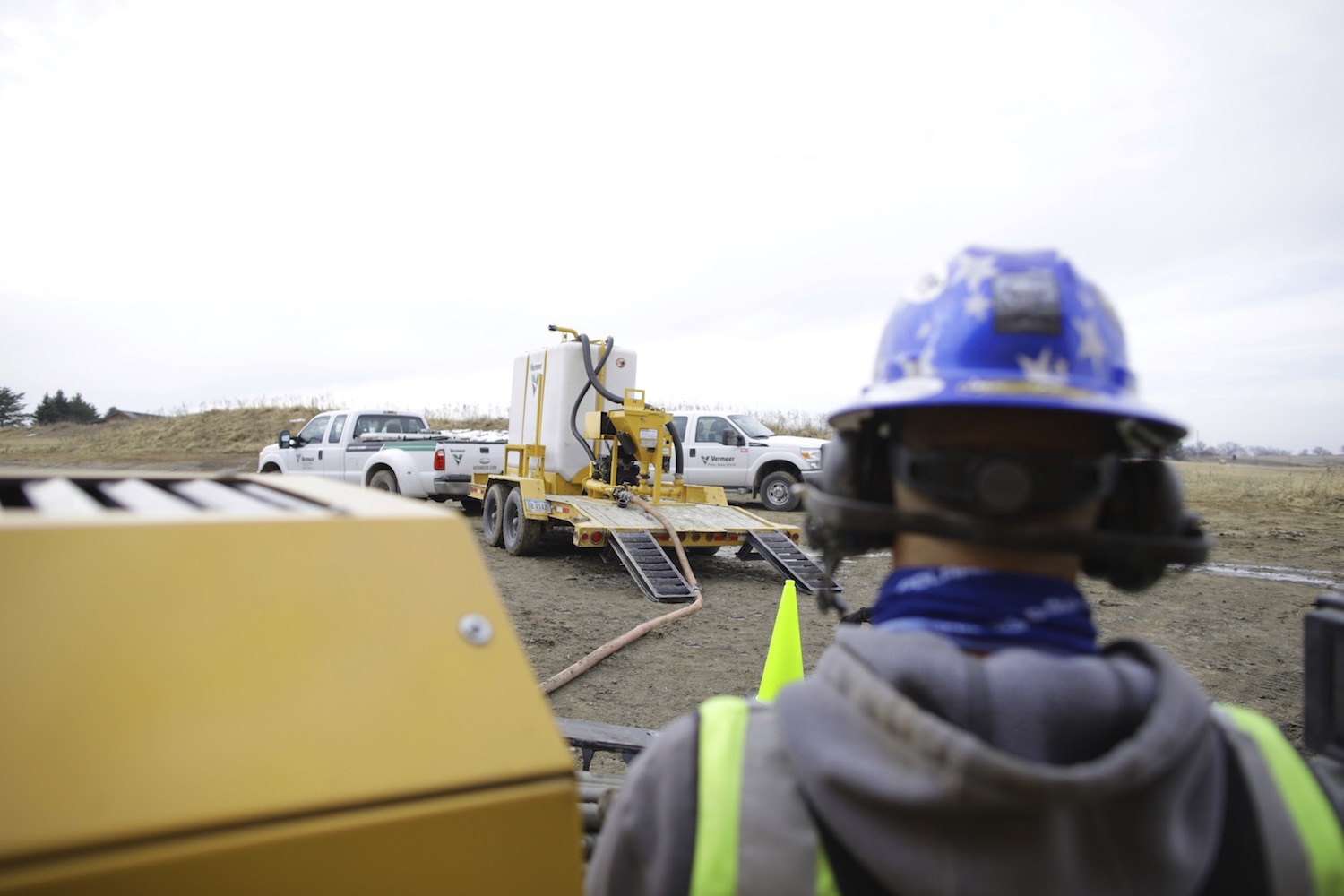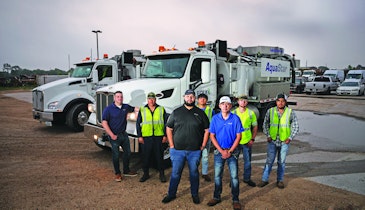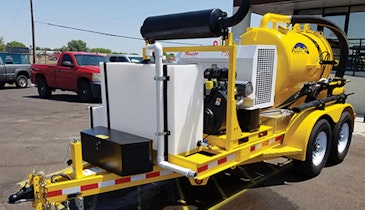Interested in Drilling?
Get Drilling articles, news and videos right in your inbox! Sign up now.
Drilling + Get AlertsHorizontal directional drilling fluid mixing systems are an essential component for efficient boring operations. Choosing the right fluid mixing system to support your HDD will help keep crews working efficiently all day.
Size and horsepower, system configuration, tank capacities and ease of use are a few variables you should consider when purchasing a new fluid mixing system. The ideal configuration should be convenient to transport and able to support your drilling operations with minimal delays. That often means pairing multiple fluid mixing systems with larger drills or on bores with higher volume requirements.
System size
According to Tod Michael, product manager for the trenchless core products at Vermeer, selecting the size that complements the drill size is the first place to start when purchasing a fluid mixing system.
“Powerful systems like the Vermeer MX300 mixing system will work with smaller utility drills through midsize rigs,” he says. “However, systems like the Vermeer MX125 mixing system pair nicely with smaller drills. It’s important to find a good balance between mixing production needs with the transportation requirements of the mixing system.”
Tank selection
Next, you need to determine how much fluid your crew needs on the job. Tank sizes range from 300 gallons to 1,000 gallons, and systems like the Vermeer MX300 can be paired with one or two tank options to provide even more fluid on a project. Larger-capacity tanks require a higher flow rates to allow the liquid to be mixed correctly. When projects require higher fluid volumes, you may want to consider having two complete MX300 mix systems or a reclaiming system like the Vermeer R250C for efficient operation.
“Choosing the appropriate tank capacities is tied to drill sizes and the required fluid flow and volume needed to support the borehole and reaming size adequately,” Michael says. “Contractors also need to think about the distance water is from their work they are doing each day; how feasible is it to put drilling operations on hold if a new batch of mud needs to be mixed during the day? Those considerations will not only help them decide what tank size is appropriate but also if they need to consider using two complete systems.”
System configuration
Michael says that available trailer or truck bed space is also a significant component in most contractors’ purchase decisions. “With many systems, contractors have limited mounting options because the power unit and the tank are built on a single skid. They may be able to fit two systems on one standard flatbed truck, but those same units will not fit within an enclosed truck or van-body. We addressed those limitations when developing the MX300 by making it modular and redesigning the shape of the tanks.”
The modular design of the MX300 will give you the ability to optimize the trailer or truck body’s space. The power unit mounts independently from the tanks for flexibility, and the narrow rectangular tanks take up less horizontal space than similar-sized systems. “It’s now much more convenient for contractors to fit multiple tanks or systems in an enclosed truck,” Michael adds.
Daily usage and serviceability
One last thing to consider when choosing an HDD fluid mixing system is daily ease of use, cleaning and serviceability. Details like the feed hopper design, fuel tank capacity, drain valve locations and access to replacement items like roll jets make a difference in how happy your crew will be with a system long term. “It’s important for contractors to choose a system that is convenient to use and clean between jobs,” Michael says. “Bentonite-packed feed hoppers are an issue many crews face, which is why Vermeer mixing systems are outfitted with a wide-mouth hopper and suction hose for the convenient pouring of drilling additives. Also, the fluid tanks on the MX300 have tapered bottoms to help prevent additives from settling and building up over time. It’s the small details that can help crews get more done every day.”
HDD mixing systems will continue to be an essential component to get the most from your equipment and crew. Make sure you take the time to choose the right system for your needs.
If you need more information about HDD fluid mixing systems, contact your local Vermeer dealer.







